An Effective Feature Modeling Approach for 3D Structural Topology Design Optimization
2021-04-27FushengQiuHongliangLiuandHongjuanZhao
Fusheng Qiu,Hongliang Liuand Hongjuan Zhao
1College of Aerospace Engineering,Shenyang Aerospace University,Shenyang,110136,China
2Chengdu Aircraft Industrial(Group)Co.,Ltd.,Chengdu,610092,China
ABSTRACT This paper presents a feature modeling approach to address the 3D structural topology design optimization with feature constraints.In the proposed algorithm,various features are formed into searchable shape features by the feature modeling technology,and the models of feature elements are established.The feature elements that meet the design requirements are found by employing a feature matching technology,and the constraint factors combined with the pseudo density of elements are initialized according to the optimized feature elements.Then,through controlling the constraint factors and utilizing the optimization criterion method along with the filtering technology of independent mesh,the structural design optimization is implemented.The present feature modeling approach is applied to the feature-based structural topology optimization using empirical data.Meanwhile,the improved mathematical model based on the density method with the constraint factors and the corresponding solution processes are alsopresented.Compared withthe traditional method which requires complicated constraint processing,the present approach is flexibly applied to the 3D structural design optimization with added holes by changing the constraint factors,thus it can design a structure with predetermined features more directly and easily.Numerical examples show effectiveness of the proposed feature modeling approach,which is suitable for the practical engineering design.
KEYWORDS Topology optimization;feature modeling;feature constraint;constraint factor;density method
1 Introduction
Topology optimization is an advanced design approach which aims at finding appropriate material distribution within a prescribed domain.At present,there have been rapid development and extensive applications for topology optimization of continuum structures,which has been successfully applied to acoustics,electromagnetics,optics,etc.And numerous topology optimization methods have been proposed,such as the homogenization method [1],solid isotropic material with penalization (SIMP) method [2–4],evolutionary optimization (ESO/BESO) method [5,6],level set method [7–9],moving morphable component/void method (MMC/MMV) [10,11],and Featuredriven topology optimization method [12].Notably,the density-based SIMP (solid isotropic material with penalization) method has been popularly adopted because of its conceptual simplicity and easy implementation,and it has been successfully implemented in commercial software systems,such as ANSYS,OptiStruct,Tosca.For an overview of topology optimization approaches and their applications,the readers are referred to the monograph [13] and the review articles [14–17].
Feature modeling technology is known as a new milestone for the development of CAD/CAM.It is an application technology with complex work but good development prospects [18,19].The study of features is mainly related to identifying and extracting parts so as to get the geometric model of parts.Then,the process programming,technical coding and numerical control coding are carried out to realize the automatic control process.On the other hand,in the process of engineering application,some optimization results are difficult to be applied to practical projects due to complex constraints,special engineering requirements and technical conditions [20–24].It should be noted that more and more attention has been paid to the research of structural topology optimization considering feature constraints because such optimization results are closer to the engineering practice,which shows a better application prospect [25,26].
The studies of feature-based topology optimization mainly focus on four aspects:(1) Introducing feature constraints (constraint model) into the constraint formulation of the optimization model,such as the CAO and SKO algorithm proposed by [20] and the manufacturing-oriented hierarchical optimization method [21];(2) A domain-oriented constraint model is established for specific or typical applications,such as the introduction of feature constraint model into the density-based method in [22,23];(3) Transforming constraint functions into design variables through models (i.e.,transforming to unconstrained optimization problems),such as a unified projection-based approach for topology optimization with manufacturing constraints [27],and constraints transformed into design variables for master slave relationships with use of the connecting variables in [28];(4) The constraints are simplified or modeled,such as the topology and thickness optimization of laminated composites including manufacturing constraints by Sørensen et al.[29].Additionally,an optimization model with manufacturing process constraints was established in [30],and an identification method was developed for enclosed voids restriction in manufacturability design for additive manufacturing structures [31].Recently,a feature-driven topology optimization method was proposed,which included fewer design variables,considering both components and structures as designable engineering features [12,32].And the feature-driven method was then successfully applied in the bio-inspired rudder structure design and the multiscale topology design problems [33,34].
This paper aims to develop an effective and efficient feature modeling approach to achieve the optimal topology designs of 3D structure with feature constraints.Different from the traditional method which requires complicated constraint processing,the purpose of this method is to design a structure with predetermined features more directly and easily.To this end,the extensible constraint factors are introduced into the feature modeling,and the feature is linked with the constraint factors by feature matching technique.And it can be flexibly applied to the structure design with added holes by changing the constraint factors to increase holes with different shapes.Thus,the topological optimization method of continuum structures can be more suitable for engineering applications.Not only the features are introduced in the process of topology optimization,but also the feature model and optimization model are relatively independent.Theoretically,the feature modeling approach can be extended and introduced into various topology optimization methods and problems.In the present work,the widely used density method is employed,and the structural design problem is solved under the formulation of maximizing the stiffness of a structure considering the constraint of material volume.
The remainder of this paper is organized as follows.In Section 2,the feature modeling approach is presented for topology design optimization.In Section 3,the Feature-based 3D structural topology optimization model is given.The numerical solution aspects are presented in Section 4.In Section 5,the effectiveness of the proposed approach is demonstrated by several benchmark tests.Main conclusions are finally drawn in Section 6.
2 Feature Modeling Approach
2.1 Basic Idea
Features include the definition information of product,various information related to the design and manufacturing of product.In the topology optimization method,the introduction of feature makes the design intention more directly reflected,and makes the established product model easier to understand and organize for production.In order to solve the design problem of engineering application,it needs simplifying for each problem before implementation of the core algorithm for topology optimization in the traditional method.Then,the process of modeling and meshing is completed.However,the process of modeling is relatively complex,and unreasonable models still need to be changed.Such a large amount of complex pre-processing has the disadvantages of large workload,uncontrollable and non-standard,which leads to the inconvenience of application.
In order to solve the complex pre-processing problem in the traditional methods,a feature modeling technology is introduced in the present work,and different problems are simplified including extracting and combining the features to establish basic feature models,and then an adaptive feature model library is formed based on the loads.The proposed method selects the appropriate pseudo-density of elements for different feature models and introduces constraint factors to control various feature models.When dealing with practical engineering problems,different constraint factors are selected according to the design requirements to facilitate the retrieval in the feature model library,and the feature models that meet the structural requirements are found to implement the core algorithm of topology optimization,as shown in Fig.1.

Figure 1:The procedure flowchart of the present feature-based optimization method
2.2 Constraint Factor
In the present feature modeling approach,the constraint factors are introduced to simplify the engineering design problem.The specific constraint expression is separated from the design variable (pseudo density),which is conducive to the extensibility of the topology optimization model.Namely,the constraint condition can be changed as needed in the practical application without changing the form of topology optimization model.By changing the values of the constraint factors,the topology optimization model and the constraint model are considered separately.
I think about you, I thought, and blushed a bit. To him I said in a dull stupid voice, I don t think very much really; I think about getting new clothes or going on my holidays or what we ll have for lunch.

Specifically,the design variable with constraint factor is a vector.According to the actual design requirements,it can be defined as:where the design variableis a vector composed ofxeandλ,and it ranges from 0 to 1.It should be noted thatxeis the traditional pseudo density of element,and it ranges fromxminto 1,namely 0 whereζdenotes the weight coefficient associated with the constraint condition,and its range is 0 In order to improve the engineering practicality,the constraint factor controlled by different design requirements is introduced into the pseudo-density function.Therefore,the pseudo density as well as the whole design optimization iteration is affected by the constraint factor.In the topology optimization model with feature constraint,the pseudo-density value of elementxminis used to replace the traditional element densityxein the variable density method.The corresponding formulation of topology optimization can mathematically be stated as: whereCdenotes the mean compliance of a structure,Fis the global load vector,andUmeans the global displacement vector.ueis the elemental displacement vector,keis the elemental stiffness matrix with pseudo density andk0is the elemental stiffness matrix of fully solid material.Vis the volume function,andindicates the upper bound of the structural volume.V0is the initial volume of a structure andfdenotes the prescribed volume ratio.Furthermore,xnewis the design variable,xeis determined by In Eq.(3),xminis a small positive number for lower bound to avoid singularity in stiffness matrix.In the present work,it is set asxmin=0.001. The shape features are particular shapes formed by a group of geometric elements with certain topological relation on the part.They have a specific function and a specific set of machining methods.The shape features can be divided into basic features and additional features.The basic features are used to construct the main shape of the parts (such as cylinder,cone,etc.),and the additional features are used to modify the local features (such as all kinds of holes,chamfering,etc.).Additional features are attached to the basic features.Any part is composed of a basic feature and several additional features. 3.1.1 Basic Feature The basic feature is the basic geometry of the construction parts,mainly refers to the cylinder,cone,form,cuboid,sphere and other simple basic geometry solid.Solid models have perfect topological structure and geometric information,and are widely used in part modeling.It can automatically detect the boundary without cracks and incomplete information,which are the basis of part modeling and the primary task of the whole design process.Some of the basic feature models are listed in Tab.1. Table 1:Solid feature model The additional features are geometric features attached to the basic feature,mainly referring to various types of hole,keyway,chamfering,etc.,which are part modifications of the basic feature and reflect the subtle structure of the geometric shapes of the parts.The feature of hole is an important engineering feature,which is used in the modeling of many parts.It should be specified for the placement of hole,location dimension and size dimension when creating the feature of a hole.The characteristics of each type of hole are summarized in Tab.2. Table 2:Geometric model and feature model 3.1.3 Boolean Operation Boolean operation is an operation that generates new features of two or more geometries in the entity model above by adding (as shown in Fig.2),subtracting (as shown in Fig.3),and intersecting (as shown in Fig.4).Through the Boolean operation of CAD (computer aided design) software,it has a breakthrough effect in the geometry modeling.Flexible application can reduce the operation of geometry model,improve the quality of modeling,and simplify the modeling difficulty of complex geometry model,so as to make the feature modeling of geometry more reasonable. Figure 2:Boolean union model In the practical engineering,the feature models can be expressed with use of the feature modeling techniques based on various features,which are connected by feature models and topology optimization algorithms.In order to realize the description of the feature model,a (D;S;C) triples is introduced.Therein,D{d1,d2,...,di} is the design space and size of the feature;S{s0,s1,s2,...,sj}contains the identifier of feature (s0),the feature matching condition and evaluation criteria (s1,s2,...,sj);C{c1,c2,c3}is the value of the constraint function for the featurebased topology optimization,c1is defined as the matching lower limit value,c2is the matching upper limit value,andc3is the feature configuration value.For example,the design feature of a round hole is shown in Fig.5.The feature constraint value is 0.8,and it can be expressed as:d1=d2=12,d3=2,d4=[0 0 1];s0=Circle001,s1=0.5;c1=xmin,c2=1,c3=0.8,wherexmincan be directly recorded as the minimum value of the elemental pseudo density. Figure 3:Boolean subtraction model Figure 4:Boolean intersection model Figure 5:Hole and its feature display In order to make the feature model more suitable for the practical application of engineering,the feature description is expressed as the feature matrix oriented to the topology optimization algorithm.The feature constraint is transformed into a matrix expression which can be applied to the optimization algorithm.In the process of feature extraction,a discrete feature matrixMewith dimension determined byDcan be formed according to the feature model.For example,the feature model in Fig.5 can be described by a 13×13×2 numerical matrix.The coding rules of node elements (regular hexahedron) are from top to bottom,from left to right (clockwise),from front to back,and from small to large (as shown in Fig.6).The position coordinates (i,j,k) and the unique identificationIDof nodes in the matrix are calculated according to Eqs.(5) and (6).The feature model is calculated based on the element stiffness matrix as shown in Fig.7. wherei∈[1,me],j∈[1,ne],k∈[1,pe],d1,d2andd3are the elements of constraint design spaceD,anddx,dyanddzare elemental dimensions. Figure 6:Feature element coding Figure 7:The solution of feature model In order to make the feature matrix of the feature constraint match the whole design space,the element feature matrix [Me]me×ne×peneed to be extended to the global feature matrix consistent with the overall design space,according to the position of constraints in the overall design spaceP(x0,y0,z0)(namely the front lower left).Then,the value ofis calculated by Eq.(4),andcan be used for iteration calculation.Therefore,the feature constraints can be introduced into the algorithm of topology optimization. whereΩdenotes the set of feature boundary,and the sets of elemental matrix are represented byGe{g1,g2,...,ge,...}.For Boolean operation,it can also be applied to the matrix expression of topology optimization algorithm.In order to match the feature matrix of Boolean operation with the overall design space,the Boolean operation model was introduced into the optimization algorithm by calculating.For example in Fig.3 triangular hole was made in the regular pentagonal prism through Boolean subtraction model. The proposed feature modeling approach for 3D structural topology optimization opens up the relatively independent variablefor the introduction of feature into the core algorithm of topology optimization,and its application process is shown in Fig.8.The corresponding topology optimization process is shown in Fig.9.It should be noted that the elemental form in the discrete process of Step 2 must be consistent with the topology optimization model.Otherwise,the transformation is carried out in Step 3. In this section,several 3D structural topology optimization problems with feature constraints are presented to test the performance of the proposed approach.The considered structures are a traditional cantilever beam,a short cantilever beam with double load and a wheel.The aim is to achieve the minimum compliance design of a structure under the prescribed volume constraint,namely the structural design problem is solved under the formulation of the stiffness maximization design. Figure 8:Feature modeling process of feature constraints In the first example,the classical cantilever beam structure is considered to demonstrate the effectiveness of the feature modeling approach.The dimensions of the cantilever beam structure are 60 mm×20 mm×4 mm,as shown in Fig.10a.Firstly,the feature constraints are not considered in the optimization algorithm,and the optimization result is shown in Fig.10b.Then,the feature constraint of a circular hole withΦ12×4 mm at (24,40,0) is introduced by utilizing the proposed feature modeling approach.The corresponding optimization result is shown in Fig.10c.It is obvious that there can achieve distinct topology design configuration when the feature modeling approach is employed to enforce the feature constraint compared with that in Fig.10b.Additionally,the optimization result of a triangular hole constraint is shown in Fig.10d with use of the feature constraint at a specified location.In many cases,such topological optimization results with feature constraints are more suited to the practical engineering design. In the second example,a short cantilever beam with double load is considered [35].The dimensions of the beam structure are 60 mm×60 mm×4 mm,as shown in Fig.11a.The topology optimization result without feature constraints is shown in Fig.11b,while the optimization result with feature constraint is shown in Figs.11c and 11d by enforcing a constraint of circular hole and a constraint of triangular hole at the specified location,respectively.It is seen that the topological designs achieved by employing the proposed approach can meet the requirement of setting holes with specified shapes.There are notably different topology details in the three optimization designs.In the practical engineering application,appropriate optimization results can be used for structural design. Figure 9:Feature-based topology optimization process Figure 10:Topology design of a cantilever beam with single load:(a) The physical model;(b) Without feature constraint;(c) With feature constraint of circular hole;(d) With feature constraint of triangular hole Figure 11:Topology design of a short cantilever beam with double load:(a) The physical model;(b) Without feature constraint;(c) With feature constraint of circular hole;(d) With feature constraint of triangular hole The third example under consideration is the structural design of 3D wheel [35].The physical model including boundary condition and loading are depicted in Fig.12a.The specified feature constraint is a triangular hole.The design domain is discretized by a 60×20×20 finite element (FE) mesh.In order to obtain the minimum compliance design of structure with feature constraints,the proposed feature modeling approach is employed.The topology optimization results are shown in Figs.12b and 12c.Compared with the structural design of Fig.12b,the optimization result of Fig.12c can achieve a design with the specified feature constraint of triangular hole.Furthermore,the iterative histories of the objective function for the optimization result in Fig.12c are presented in Fig.13.It is seen that there are stable iterations and fast convergence of design optimization,thus the proposed feature modeling approach is effective and efficient to achieve 3D structural topology designs with feature constraints. Figure 12:Topology design of 3D wheel:(a) The physical model;(b) Without feature constraint;(c) With feature constraint of triangular hole Figure 13:Iterative histories of the objective function for the optimization result in Fig.12c In this paper,a feature modeling approach is developed for addressing the 3D structural topology optimization problems with feature constraints.Considering the practical application of optimization results,a feature introduction scheme with constraint factors is proposed.The introduction of the present scheme separates the feature constraint modeling from the core algorithm of topology optimization,and only the constraint factors can realize the loose coupling of the optimization algorithm,which can provide a more convenient extension way for the application of topology optimization.To further improve the feature extraction model,it can lay a foundation for the establishment of constraint feature base,and then provide empirical support based on database for topology optimization,which will open up a new way to promote the application of topology optimization methods.Numerical examples show feasibility and effectiveness of the proposed feature modeling approach. This paper focuses on the free-form optimization problem with embedded geometric features fixed at certain positions.It should be noted that the location of the embedded features strongly influences the performance of the optimized structure.As a consequence,application of the proposed approach to solve the problem of optimally embedded predesigned objects into a design region and designing the topology of the connecting structure is also of interest.More attention will be drawn to exploring such issues in future. Acknowledgement:The authors would like to thank very much to the anonymous reviewers for their insightful suggestions and comments on the early version of this paper. Funding Statement:This work is supported by the National Natural Science Foundation of China (12002218) and the Youth Foundation of Education Department of Liaoning Province(JYT19034).These supports are gratefully acknowledged. Conflicts of Interest:The authors declare that they have no conflicts of interest to report regarding the present study.
2.3 Topology Optimization Formulation
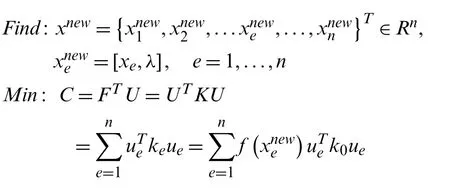


3 Feature-Based 3D Topology Optimization Model
3.1 Shape Feature

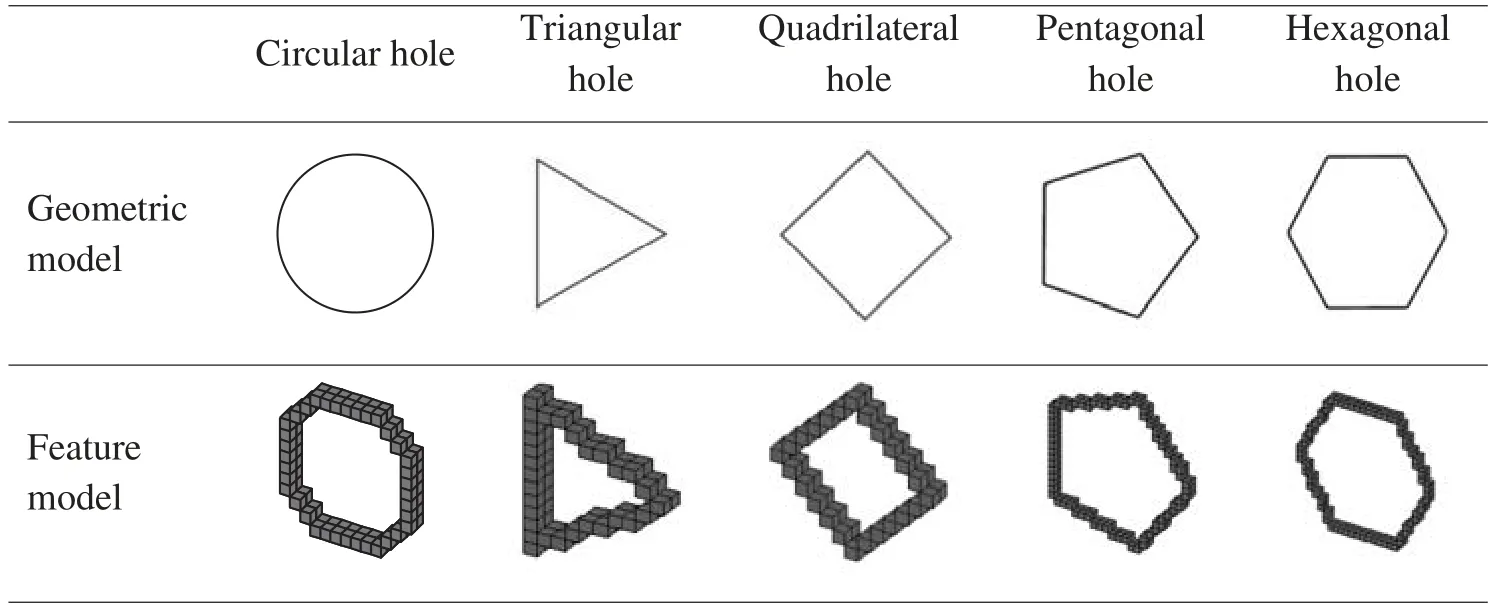
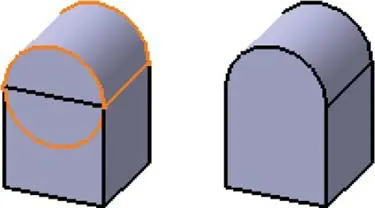
3.2 Feature Description for 3D Topology Optimization
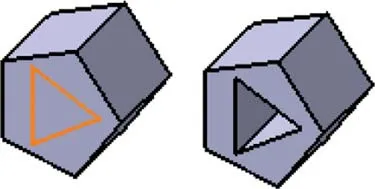



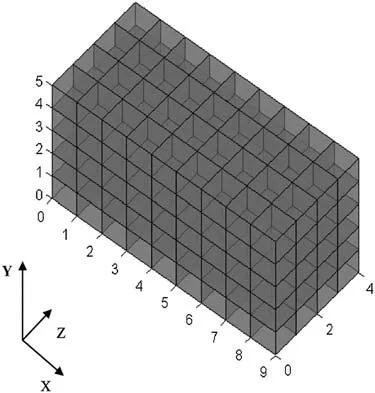
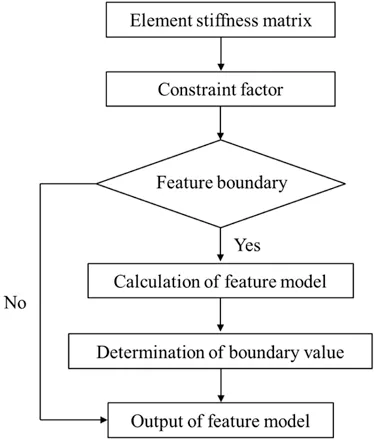

4 Numerical Solution Aspects
5 Numerical Examples
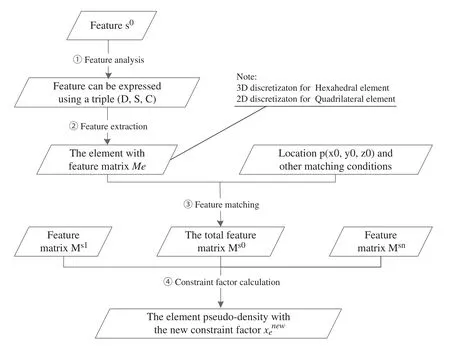
5.1 A Traditional Cantilever Beam
5.2 A Short Cantilever Beam with Double Load
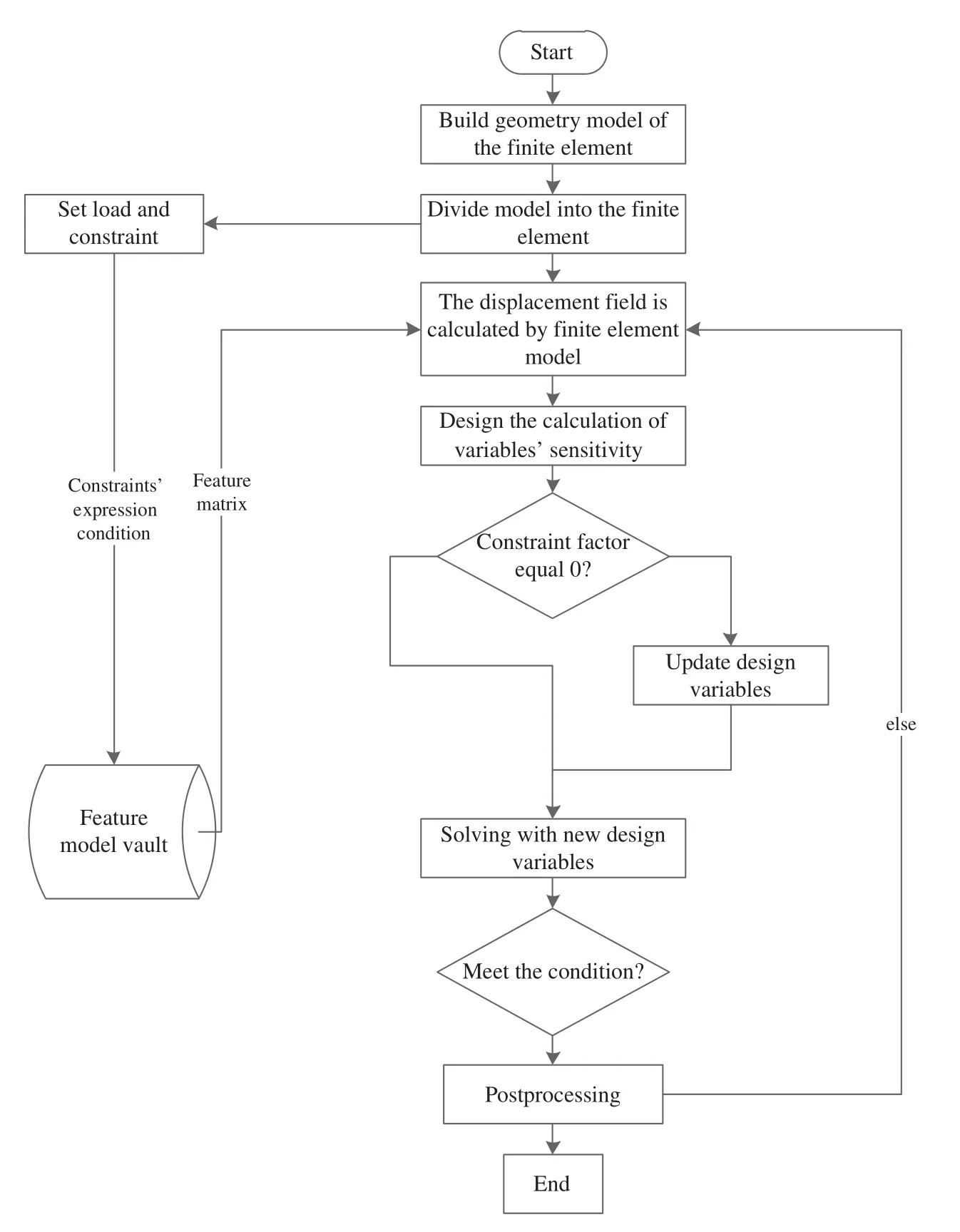


5.3 Topology Optimization of 3D Wheel

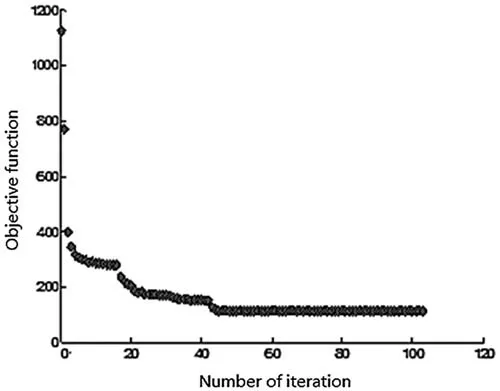
6 Conclusions
杂志排行
Computer Modeling In Engineering&Sciences的其它文章
- Redefined Extended Cubic B-Spline Functions for Numerical Solution of Time-Fractional Telegraph Equation
- Maximum Probabilistic and Dynamic Traffic Load Effects on Short-to-Medium Span Bridges
- Alcoholism Detection by Wavelet Energy Entropy and Linear Regression Classifier
- Number Entities Recognition in Multiple Rounds of Dialogue Systems
- Dynamic Pricing Model of E-Commerce Platforms Based on Deep Reinforcement Learning
- Behavior of High Strength Concrete Filled Square Steel Tube Stub Columns with Inner CFRP Tube Under Biaxial Eccentric Compression
